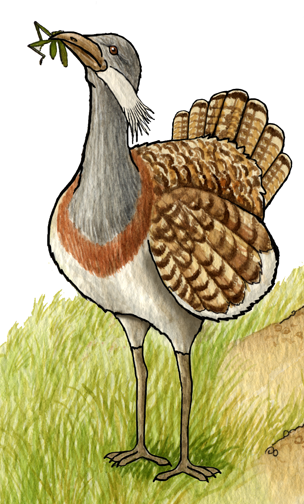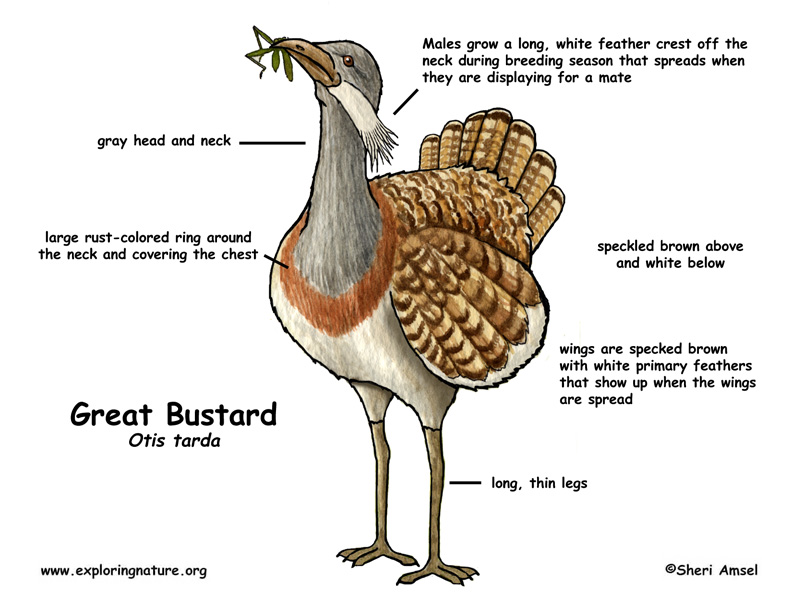

They are found in Europe and temperate Asia.
They live on grasslands and farm fields.
These are huge birds up to 3.5 feet (110 cm) long and with a wingspan reaching 8 feet (2.5 m) across! They can weigh up to 35 pounds (16 kg) or more. They are speckled brown above and white below. They have a gray head and neck with a large rust-colored ring around the neck and covering the chest. The wings are specked brown with white primary feathers that show up when the wings are spread. Males grow a long, white feather crest off the neck during breeding season that spreads when they are displaying for a mate. Females are much smaller than males and plain-colored.
They walk along slowly searching for insects and seeds. If disturbed they will run, but rarely take to flight. They gather into groups (gregarious) in winter.
They eat insects, spiders and small amphibians along with seeds – so are omnivorous.
Chicks are killed by hawks, eagles, foxes and badgers.
Females lay 2-3 tannish-green eggs on the ground in a hollow scraped out by the female. She warms the eggs (incubates) for about a month. Young can leave the nest right after hatching and will follow the mother to search for food. Males compete (and sometimes fight) for females and mate with many each breeding season (polygamous). They do not call or sing, but do a startling mating display pulling in their head, spreading their wing feathers and showing their bright white underside. Aggressive competition for mates leads to a much shorter life for males than females.
They can live for up to 15 years in the wild, but often do not survive predation that long.
Kingdom: Animalia
Phylum: Chordata
Subphylum: Vertebrata
Class: Aves
Order: Gruiformes
Family: Otididae
Genus: Otis
Species: O. tarda
When you research information you must cite the reference. Citing for websites is different from citing from books, magazines and periodicals. The style of citing shown here is from the MLA Style Citations (Modern Language Association).
When citing a WEBSITE the general format is as follows.
Author Last Name, First Name(s). "Title: Subtitle of Part of Web Page, if appropriate." Title: Subtitle: Section of Page if appropriate. Sponsoring/Publishing Agency, If Given. Additional significant descriptive information. Date of Electronic Publication or other Date, such as Last Updated. Day Month Year of access < URL >.
Amsel, Sheri. "Bustard (Great)" Exploring Nature Educational Resource ©2005-2024. April 8, 2024
< http://exploringnature.org/db/view/229 >

